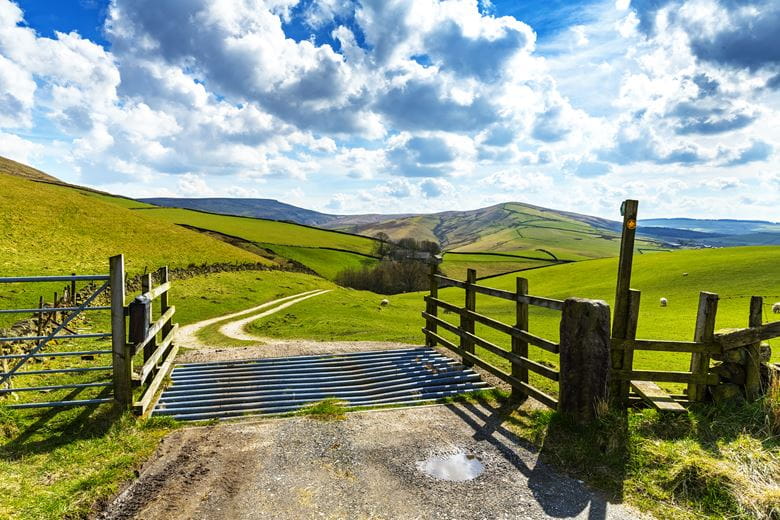We are very lucky in England & Wales, with 140,000 miles of footpaths throughout the countryside, allowing everyone to enjoy the natural landscape. On occasions, however, these footpaths can cause problems.
What are the issues?
Many footpaths cross private land and, in some instances, pass through farmyards, which can create risks from a general health and safety perspective, but also the possibility of spreading diseases. This was particularly evident during the foot-and-mouth outbreak in 2001, when cattle and other cloven-hoofed ruminants were at risk, and now during the COVID-19 pandemic when humans are at risk.
The vast majority of the public use our right of way networks respectfully and normally cause no issues to farmers or landowners. Where there can become a problem is when individuals deviate from the designated footpaths and go on to claim that they have a ‘right to roam.’
This issue has come to the fore for many of our clients in recent weeks, with COVID-19 lockdown curtailing the public’s movement and activities. This, combined with the good weather, has meant that more people than ever have been using our rights of way networks.
How can I encourage footpath users to do so legally and respectfully?
For now, some simple polite and positive signage might be helpful. It’s worthwhile making sure this signage is clear and in good condition – old, damaged signs may lead people to think that they no longer apply.
If you find someone on your land who is not on the public right of way, you should start by calmly explaining the situation and directing back to the right of way. It could be worth explaining some issues that they may not have thoughts about, such as the risk of dogs alarming or hurting livestock accidentally, when the dogs are just playing.
If issues persist, you could consider signage which is more emotive, such as ‘please do not pet the lambs, they might catch your germs.’
Where access via farmyards is the main issue, one option is to provide an alternative signed permissive path on land around the yard. A polite notice at the footpath entrance to the farmyard explaining the risks to the farming family and requesting that walkers use the alternative route will persuade a large percentage of the public.
Taking it a step further, you could use this time to take note of the desire lines (ways the public seem to think are footpaths but are not). Then, at the appropriate time, you can erect more permissive path signs and plans on the land. In the medium term, there may even be some commercial advantages.
How can I stop a new public right of way being created?
Once the current issues have come to an end, these steps outlined above may be effective in discouraging use on an ad hoc basis, but even if well-documented in time it might not safeguard you against the creation of a new public right of way.
You can however protect the status of your land using an application form, along with a plan identifying the routes of public rights of way (if there are any) and confirmation that no further public rights of way exist.
There will then be a 12-month period during which the application can be challenged, with notices erected on the land.
Whilst there is a fee associated with this process, we strongly urge landowners to take this step to protect their land holdings.
Latest news
- DEFRA has today opened the Improving Farm Productivity grant
- Carter Jonas Reports Half Year Results for 2020
- Carter Jonas Strengthens Rural South West Team With Senior Appointment
- Battery Energy Storage
- Carter Jonas signs-up to Time to Change initiative
- Raft of Promotions at Carter Jonas
- Carter Jonas Achieves Gold Investors In People Accreditation
- Newbury Straw Sale met with Selective Trade as Spring Approaches
- Newbury Straw Sale met with buoyant trade



